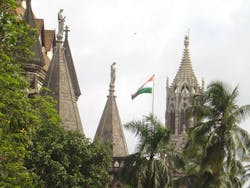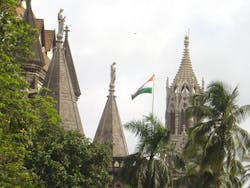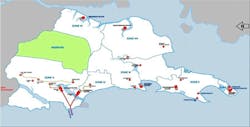India: Digging Deep in Mumbai
With less than half of its domestic wastewater treated, India is facing environmental pollution challenges. In response, the Mumbai Municipal Corporation building is an underground sewage tunnel as part of the multi-million dollar Mumbai Sewage Disposal Project (MSDP). What’s the latest on the project and will it get finalised?
By Jaqdish Kumar
Only 37% of domestic wastewater is treated in India. As a result, coliform contamination is becoming a major source of contamination in rivers and groundwater in India. Partially or untreated sewage is the single major source for deterioration of surface or groundwater quality. It contributes 70% of the pollution load to streams or water bodies of India.
A report from the Central Pollution Control Board (CPCB) published in March 2015 shows sewage generation from urban areas is estimated at around 62,000 million litres per day (MLD) whereas the total treatment capacity available is only 23,277 MLD.
In its 2015 inventory of sewage treatment plants (STPs), CPCB reported that there are 816 STPs in 28 States/Union Territories of India. Out of this total, 522 STPS are operational, 79 STPs are non-operational, 145 STPs are under construction and 70 STPs are proposed for construction.
In the report foreword, Shashi Shekhar, chairman of the CPCB, said: “It is necessary to make mandatory to setup STPs by the municipal authorities for bridging the treatment gap and enforcement of consent management.”
Mumbai goes big on disposal
As a step to solve this problem across the city of Mumbai, the Municipal Corporation of Greater Mumbai (MCGM) will be building new 6.390 kilometer priority sewage tunnel as part of the $300 million Mumbai Sewage Disposal Project (MSDP).
MSDP is a strategic action plan for the sewerage segment that aims to improve environment and sanitation in the city and minimise pollution and risk of contamination.
The project will also increase the quality and reliability of wastewater collection, treatment and disposal through affordable and sustainable technologies over a 25-year period, which is expected to be completed by 2025.
The projects consists mainly of two elements, the Priority Sewer Tunnel and the collector sewer. The collector sewer will comprise rehabilitated sections of the existing trunk sewer that collects the sewage from the connected catchments. Flows to the collector sewer will be contributed by the branch network in the area. Flow from the collector sewer will be intercepted, screened and diverted to the Priority Sewer at intervals of approximately 800 to 1000m.
Under the MSDP project the tunnel will be built with an investment of $56 million and will run between Borivli and Malad. Construction of tunnel work is expected to start as soon as environmental clearance is received from the Indian Ministry of Environment and Forests (MoEF), according to an MCGM official.
“The corporation had invited tenders in June this year [2015] without taking environment clearance, for which July 31, 2015 was the last date. However, we have to take back the tender for the project and the tender will be called as soon as the central government clears the projects,” the official adds.
A part of this project is the Priority Sewerage Tunnel-1, which will run from Don Bosco junction in Borivli to Malad wastewater treatment plant (WWTP). The project will have an underground sewerage tunnel which will carry sewerage from water courses as well as pumping stations together, into the sea at Erangal, Malad (West).
Environment Issues
Once operational, the project will permit the decommissioning of existing pumping stations (Gorai, Shimpoli, Charkop and Malad) by delivering sewage flows by gravity directly to the proposed Malad Influent Pumping Station near the proposed Malad sewage treatment plant. Developed using a 2-3.5 metre tunnel boring machine, the tunnel will be 18 meters to 20 meters below the ground and will not even affect the mangroves in the site areas from where the tunnel is passing, the MCGM official says.
Speaking on environmental impact of the project, Pune based NJS Engineers India Pvt say the project will not impact the environment. Instead the tunnel will take untreated sewage to Malad sewage treatment plant which is currently released in to the sea.
Tenders
The new project is estimated to benefit four million people directly. The tunnel will deliver sewage flows by gravity to the proposed Malad Influent Pumping Station, near to the 847,000 m3/day Malad WWTP.
A pre-bid tender floated for the consultancy services on the Malad pumping station and wastewater treatment plant attracted interest from several players, including NJS Engineers Private Limited, CH2M (INDIA) PVT LTD and Black & Veatch. The final tender is expected to be awarded after the government’s environmental department clears the project.
When started, the project is expected to take 39 months to complete. With the city running out of space for utility services, the project is very important for Mumbai, and couldn’t start soon enough.
Jaqdish Kumar is a freelance correspondent for WWi magazine, based in India.
More Water & WasteWater International Archives Issue Articles



